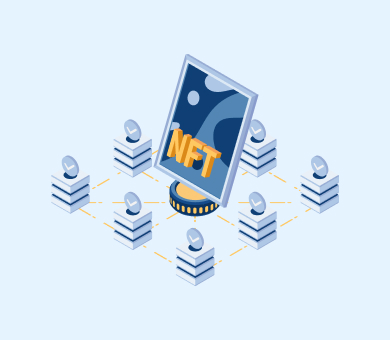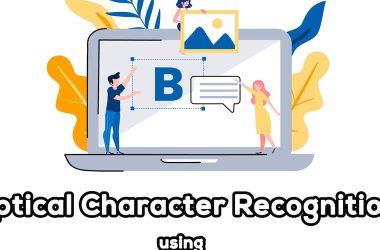Non-fungible tokens (NFTs) offer a unique way to represent the ownership and value of digital assets on the blockchain. However, within their space, not all of them are the same.
Essentially, they can be broadly categorized into two types: dynamic and static. While static tokens are immutable and retain the same properties over time, dynamic ones can change based on various factors.
This article explores the distinctions between these two types, highlighting their notable use cases and renowned projects.
Understanding Dynamic NFTs
Dynamic NFTs (also known as evolving/reactive) are digital assets that can change their attributes or metadata in response to certain conditions or events.
These changes are governed by smart contracts and can be triggered by real-world events, user interactions, or predefined criteria.
Dynamic NFT Applications
The reactive type offers a range of possibilities across various industries. Here are some notable use cases demonstrating their versatility and potential:
Gaming
In gaming, evolving digital assets can make the experience more exciting. Characters, weapons, and items can evolve based on what players do in the game.
For example, a character might level up, gain new abilities, or change appearance as the player progresses. These NFTs can also serve as rewards for completing quests or reaching milestones, making the game more engaging.
Sports and Entertainment
In sports and entertainment, reactive NFTs can enrich fan engagement. For instance, athlete cards can change based on performance, achievements, or statistics after each game.
Besides, reactive tokens can create interactive fan experiences, such as collectibles that evolve with a team’s season performance or event-specific merchandise that updates with new content.
Financial Instruments
When it comes to finance, reactive assets can represent financial assets and make them more responsive to market conditions.
For example, tokenized assets can update their value or conditions based on market data and adjust to bonds, derivatives, or other financial products.
Education and Certification
In education and certification, evolving NFTs provide a flexible way to represent credentials.
Educational certificates or professional credentials can be updated with additional courses completed, skills acquired, or work experience gained, offering a dynamic digital resume.
Dynamic NFT Examples
Evolving non-fungible assets are already used in various incredible projects that take advantage of their ability to change in response to specific actions. Here are some notable examples:
Rarible
Rarible is a popular NFT marketplace where artists and creators can mint tokens that change based on specific criteria. For example, an artwork might transform as the artist adds new elements over time or as collectors interact, creating a unique and interactive digital art experience.
Async Art
Async Art is a platform where artists create programmable pieces that can change their appearances based on specific circumstances.
For instance, an artwork could transform based on the time of day, weather conditions, or stock market details. This would create a living piece of art that constantly evolves and provides collectors with new ways to create.
Aavegotchi
Aavegotchi combines DeFi (Decentralized Finance) and NFTs, allowing players to own and interact with digital pets that change based on their interactions with the platform.
These digital pets, called Aavegotchis, gain new attributes, increase in value, and change their look depending on how they are used in the game and within the DeFi ecosystem.
Exploring Static NFTs
Static NFTs are digital assets with fixed attributes that do not change over time. Once created, their metadata remains immutable, or unchanging, which makes them an ideal option for items where permanence and consistency are a must.
Static NFT Applications
Although immutable assets don’t change like dynamic ones, they serve important purposes across different areas. Here are some key ways static NFTs are used:
Digital Art
Unchanging NFTs are used in digital art to show that a piece is unique and owned by someone, which makes buying, selling, and trading digital art safer and more reliable.
Identity Verification
Static NFTs can also be used to prove who people are online, serving as digital IDs or passports. This ability can help users confirm their age or show that they have the right skills for a job.
Memorabilia
Fixed NFTs can be digital versions of historical items, such as old photos or famous artworks. They let people own a piece of digital history, making it easier to collect and share important memories or cultural moments.
Static NFT Examples
Static NFTs, while maintaining fixed attributes, are also used in various projects across different sectors. Here are some examples:
CryptoPunks
CryptoPunks is one of the earliest and most iconic projects. It features 10,000 unique 24×24 pixel art characters, each with distinct attributes. These immutable tokens serve as collectible digital art pieces and have become highly sought after in the blockchain community.
Decentraland
Decentraland is a virtual reality platform built on the Ethereum blockchain. Users can buy, sell, and trade virtual land parcels represented by fixed items called LAND tokens.
They give owners full control over their virtual property and enable them to build, monetize, and interact with decentralized applications within the virtual world.
Hashmasks
Hashmasks is a digital art project comprising 16,384 unique digital portraits created by over 70 artists. Each static portrait is associated with a randomly generated name and attributes. These tokens serve as collectible artworks and have gained popularity for their unique and visually striking designs.
How to Choose Between Evolving and Static NFTs
Choosing between dynamic and static non-fungibles involves considering the nature of your content, audience, and long-term goals.
For content that remains fixed over time, such as digital artwork or collectibles, the unchanging variant is the way to go.
They appeal to collectors who value the uniqueness and scarcity of the assets. They’re relatively simple to create and maintain, making them suitable for projects with limited resources.
On the other hand, the evolving counterpart is perfect for content that can unwind or interact with users, like games or virtual experiences. These tokens offer ongoing engagement opportunities, attracting users seeking immersive and interactive content.
However, they require more development resources, partnering with a reliable NFT development agency, and ongoing updates to keep the experience fresh and engaging.
Future Outlook and Trends
Looking ahead, NFTs are set to become even more mainstream. They won’t just be about art and gaming anymore; expect the tokenization of real estate, healthcare, and many more industries.
As blockchain tech improves, non-fungible tokens will become more eco-friendly and easier to use. Plus, with AR and VR tech in the mix, NFT experiences will get even more incredible and interactive.
Conclusion
Dynamic and static NFTs have different strengths and are helpful for various things online. Knowing what each type does best can help creators, investors, and users choose the right one for their projects.
As NFTs keep getting more popular and creative, dynamic and immutable types will become essential for how we own and use digital stuff.
Want to dive deeper into non-fungibles for your project or business? Reach out to our NFT development team and let’s chat about how we can help you ride the wave.
The post Dynamic Vs. Static NFTs: Key Use Cases and Examples appeared first on SCAND.









